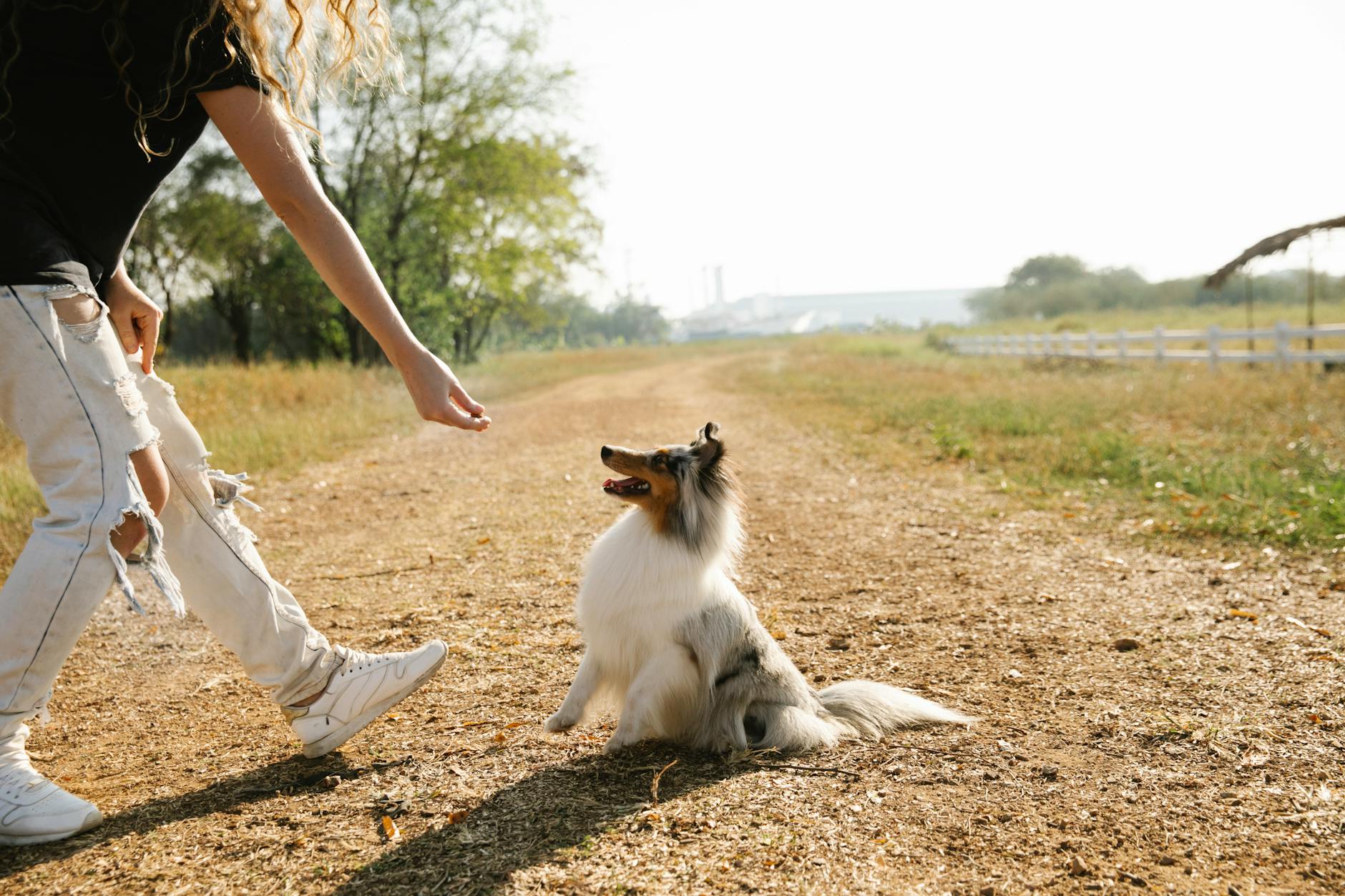How to Train Your Dog to Speak on Command
Channel your dog’s natural barking into controlled, purposeful communication sessions.

Teaching your dog to bark—or “speak”—on command is not just a fun trick: it’s a practical way to channel natural behavior into a positive experience. Many owners are surprised at how effectively their dogs can learn to communicate specific needs and wants with some patience and consistency. This guide provides step-by-step instructions, tips, and considerations to make teaching your dog the ‘speak’ command productive, controlled, and enjoyable for both of you.
Table of Contents
- Why Teach the ‘Speak’ Command?
- Preparation for Training
- Step-by-Step Guide to Teaching ‘Speak’
- Adding a Hand Signal
- Tips for Success and Troubleshooting
- Practical Uses for the ‘Speak’ Command
- Teaching ‘Quiet’ After ‘Speak’
- Frequently Asked Questions
Why Teach the ‘Speak’ Command?
While barking is an instinctive behavior for dogs, giving it structure through training empowers you to:
- Prevent nuisance barking by giving your dog a controlled outlet for this natural instinct.
- Improve communication—dogs can alert you to specific needs like needing to go outside.
- Show off fun tricks to friends and family and build your dog’s confidence in training sessions.
- Lay the foundation for more advanced communication behaviors, such as differentiating between ‘speak’ and ‘quiet’, or even learning to ‘whisper’ (bark softly).
Preparation for Training
Before you begin, ensure you have:
- High-value treats to reward your dog immediately after they bark on command.
- A clicker (optional), to mark the exact moment your dog performs the correct behavior.
- A quiet, distraction-free environment where your dog can focus solely on the training session.
Also, choose a consistent verbal cue (e.g., “Speak” or “Talk”) that you will use every time you want your dog to bark.
Step-by-Step Guide to Teaching ‘Speak’
The key to teaching ‘speak’ is capturing a natural bark, then reinforcing it with a cue. Here’s how:
- Prompt Your Dog to Bark: Get your dog excited enough to elicit a bark—this might involve showing them a favorite toy, ringing the doorbell, or playfully running and jumping to engage them.
- Mark and Reward: The instant your dog barks, say your chosen cue word (“Speak!”), click (if using a clicker), and immediately reward with treats and praise.
- Repeat the Sequence: Practice this process over several short sessions—consistency is essential.
- Add the Verbal Cue: As your dog starts to associate the word “Speak” with barking, give the cue just before you expect your dog will bark. Reward each successful response.
- Capture Only One Bark: Aim to reward only a single bark to avoid teaching your dog to go into an excited bark-fest each time the command is issued. Mark and treat only for solitary barks.
Adding a Hand Signal
Dogs are excellent at reading body language, so pairing a specific hand signal with your verbal cue increases your dog’s understanding and reliability:
- Begin with your open hand, palm facing the dog.
- Quickly close your four fingers to your thumb a few times, mimicking a “talking” motion.
- Use this hand signal every time you give the verbal command.
- Gradually, your dog will associate the hand gesture with the ‘speak’ command and respond to either (or both) cues.
Tips for Success and Troubleshooting
- Be Consistent: Only reward your dog for barking when you have requested it. Ignore or calmly redirect any barking outside training sessions to prevent accidental reinforcement of unwanted barking.
- Short Sessions: Limit training to brief, regular periods (about 5 minutes at a time) to avoid frustrating your dog and inadvertently increasing overall barking.
- Be Aware of Your Environment: If you live in an apartment or have close neighbors, practice this trick thoughtfully and during appropriate times of day.
- Use a Calm Voice: Deliver all cues in a calm, confident tone—raising your voice or becoming flustered can confuse or stress your dog.
- Proof the Behavior: Build reliability by gradually introducing distractions, practicing in different environments, and increasing your distance and duration. This ensures your dog will respond to the ‘speak’ command anywhere, anytime.
- Don’t Encourage Excess Barking: The objective is controlled communication, not a free-for-all barking frenzy. Always reward for precision, not volume or duration.
Practical Uses for the ‘Speak’ Command
Beyond entertaining your friends, teaching ‘speak’ can have valuable everyday applications:
- Bathroom breaks: Dogs can be trained to alert you with a bark when they need to go outside.
- Safety and emergencies: A dog that barks on command can be an additional safety feature for your home, warning you of strangers or emergencies.
- Therapy and service work: Some working dogs use the ‘speak’ command to get their handler’s attention or notify them of medical issues, like low blood sugar.
- Teaching ‘whisper’: You can modify the technique to teach your dog to bark at a lower volume, which can be a fun party trick or a way to avoid disturbing others.
- Foundation for further training: Once your dog understands ‘speak,’ you can use it to teach ‘quiet,’ resulting in a well-rounded, communicative pet.
Teaching ‘Quiet’ After ‘Speak’
One of the biggest benefits of teaching ‘speak’ is using it as a springboard to teach your dog to be quiet on cue:
- Ask For ‘Speak’: Cue your dog to bark and reward the response.
- Wait for Silence: As soon as your dog stops barking—even momentarily—clearly state your new ‘quiet’ cue (e.g., “Quiet!”) and immediately reward.
- Repeat: Practice alternating between ‘speak’ and ‘quiet,’ rewarding swift response to both cues.
- Generalize the Behavior: Practice in different settings and with varying distractions so your dog understands to be quiet when asked in any environment.
This two-part training strategy dramatically improves your ability to manage barking and is especially helpful for dogs prone to excessive vocalization.
Frequently Asked Questions
Q: What if my dog won’t bark during the session?
A: Use excitement triggers that usually cause barking, such as a favorite toy or a knock at the door. Stay patient—some dogs are naturally quieter and may need more session time to build up excitement.
Q: Will teaching ‘speak’ make my dog bark more overall?
A: If you are consistent about only reinforcing barking on command and ignoring or redirecting other barking, your dog will learn to differentiate and will not bark excessively.
Q: Can I train my dog to ‘speak’ and ‘quiet’ at the same time?
A: Yes, but it’s important to begin with ‘speak,’ then introduce ‘quiet’ as your dog masters barking on command. This order helps avoid confusion and makes the training process smoother.
Q: How do I ensure everyone in my household uses the same cues?
A: Discuss cues and agree on both the word and hand signal before starting training. Consistency among all family members is vital for success.
Q: My dog barks multiple times after the cue. How can I teach them to only give one bark?
A: Only reward single barks. If your dog continues barking, calmly wait for silence and try the command again later. Mark and reward precise responses to help your dog understand the exact expectation.
Extra Tips for Training Success
- Patience is Essential: Some dogs will pick up the trick quickly, others will need extra time—especially less vocal breeds.
- Don’t practice too often in high-density areas or late at night: Be considerate of your neighbors and surroundings to maintain a good relationship with those around you.
- Reward immediately: Instant feedback helps dogs link the cue and the correct behavior.
- Mix up the environment: Proof your training in different rooms and outdoor spaces so your dog generalizes the command.
Quick Training Reference Table
| Step | Description | Goal |
|---|---|---|
| Excite and Prompt Bark | Use toys, play, or noises to incite a bark | Trigger natural barking |
| Mark & Reward | Say the cue and reward when the dog barks | Associate bark with the command |
| Add Hand Signal | Use repeated finger-to-thumb gesture with the cue | Strengthen non-verbal cue |
| Practice Single Bark | Reward only for one bark, ignore multiples | Avoid over-barking |
| Teach ‘Quiet’ | Reward immediate silence after the command | Build on impulse control |
Take Your Dog’s Communication to the Next Level
Once your dog has mastered ‘speak’ and ‘quiet’ on command, you might consider advanced communication training, such as using buttons for specific words or phrases, as some trainers and pet owners have successfully demonstrated. While not a requirement, these tools can open up new avenues for understanding and responding to your dog’s emotional and physical needs, further strengthening your bond for years to come.
References
- https://www.akc.org/expert-advice/training/train-your-dog-to-speak/
- https://www.akc.org/expert-advice/training/expert-tips-for-dog-training/
- https://www.akc.org/expert-advice/training/how-to-teach-your-dog-to-talk/
- https://www.akc.org/sports/herding/articles/speak-softly/
- https://www.youtube.com/watch?v=kUwo32kYldw
Read full bio of Anjali Sayee












